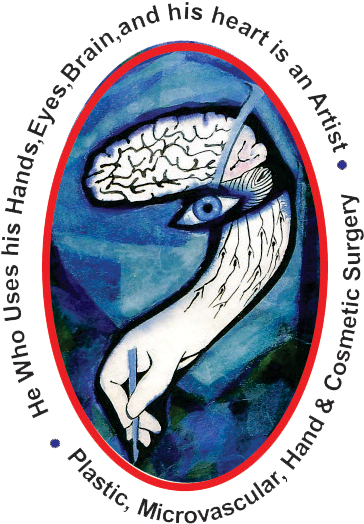Peripheral Bypass Surgery
Peripheral bypass surgery is performed to treat peripheral arterial disease(PAD), a disorder affecting blood flow (narrowing or occlusion by atherosclerotic plaque) through the veins and arteries outside of the heart and brain.

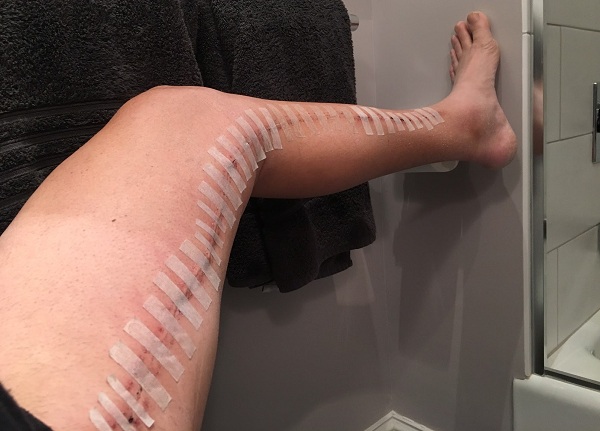
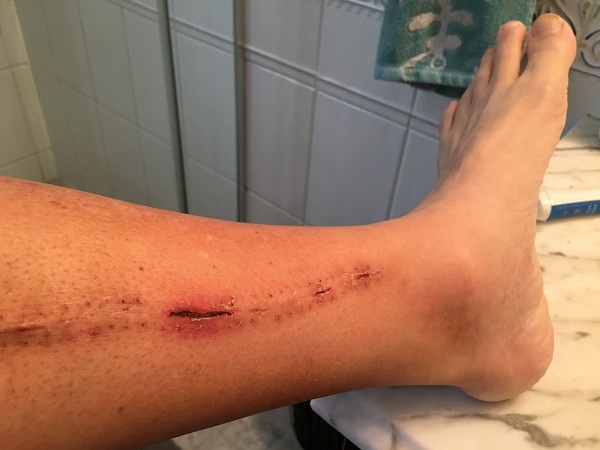
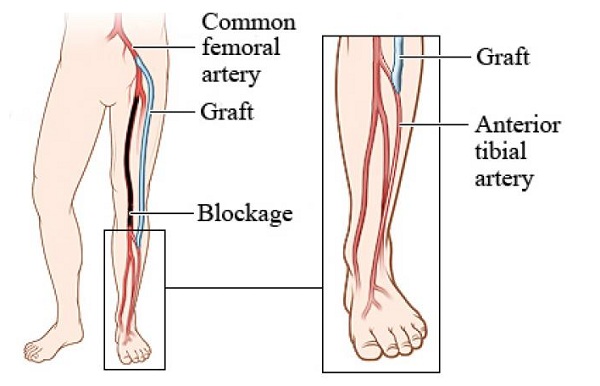
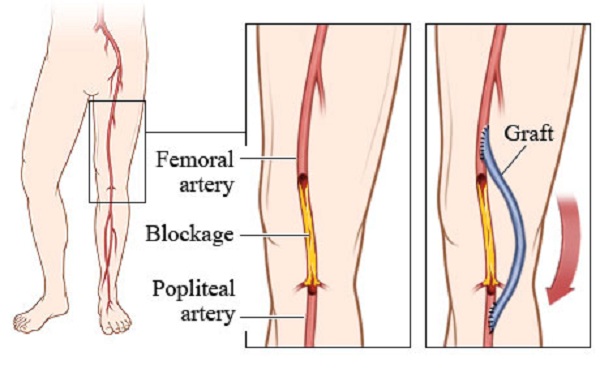
Peripheral bypass surgery opens blocked vessels using a peripheral graft, a special tube that reroutes blood around the blockage. Grafts are made of natural human tissue or a synthetic material (such as polytetrafluoroethylene [PTFE] or Dacron). This graft is sewn above and below the diseased artery so that blood flows through the graft.
Aortobifemoral Bypass for Peripheral Arterial Disease
Aortobifemoral bypass surgery is used to bypass diseased large blood vessels in the abdomen and groin. Synthetic material grafts are more likely to be used than transplanted natural tissue grafts for aortobifemoral surgery, because the blood vessels involved are large in this area.
General anesthesia is used during surgery and will cause you to sleep through the procedure. You may stay in the hospital four to seven days. And you can expect your belly and groin to be sore for several weeks. You will probably feel more tired than usual for several weeks.
You may be able to do many of your usual activities after four to six weeks. But you will likely need two to three months to fully recover, especially if you typically do a lot of physical activities.
Peripheral Leg Bypass Surgery
During a leg bypass surgery, grafts are placed during surgery to carry blood from the femoral artery in the thigh to an artery further down the leg. The graft is stitched into the artery above and below the blockage. This creates a new passage for blood flow. After the graft is in place, the vascular surgeon closes the incisions in the skin with stitches or staples.
Types of Leg Bypass Surgery—Peripheral Grafts
Two types of bypass are used depending upon where your artery is blocked:
Distal Bypass: Used for the lower part of your leg. The graft may be your own vein or both your vein and synthetic material.
Femoral Popliteal Bypass: Used for the upper part of your leg. The graft may be either your own vein or synthetic material.
A vein from your own legs or arms can be used as a blood vessel graft. Vein grafts work best in long leg blockages that start from your groin and extend below your knee. Man-made (synthetic) grafts are materials that your body easily accepts. These grafts work best on arteries at or above the knee.
Questions? We got Answers!
Aortobifemoral bypass surgery is for people who have narrowed or blocked blood vessels (aorta or iliac arteries) in the abdomen and pelvis. Usually the disease must be causing significant symptoms before bypass surgery is considered. Aortobifemoral bypass grafts stay open about 90 percent of the time for at least five years.
Leg bypass surgery is performed to reroute blood around a blockage in the leg to relieve symptoms such as:
- non-healing wounds over pressure points
- numbness, weakness or heaviness in muscles when walking
- pain in the toes or feet
- gangrene
If you are having surgery or a procedure, you will likely be scheduled for a visit to the Cosmo Polyclinic for preoperative information and tests.
The day of surgery, your care will be provided by surgeons, anesthesiologists and nurses who specialize in vascular bypass surgery. After your procedure, you will recover in the post-surgical care unit where you will receive comprehensive care by an experienced surgical and nursing staff.
During your surgery, family and friends can wait in the waiting room where staff members will provide surgery updates.

